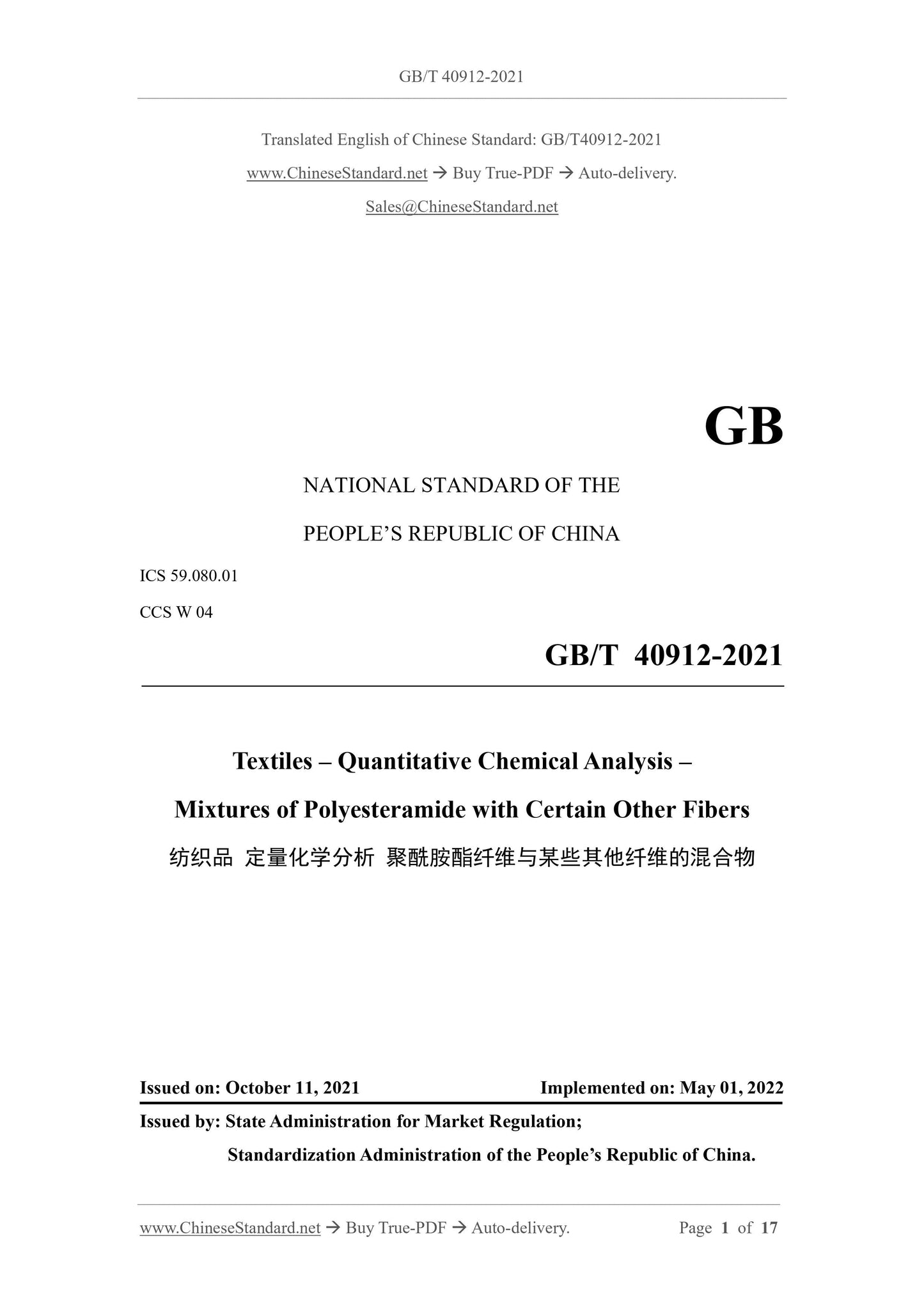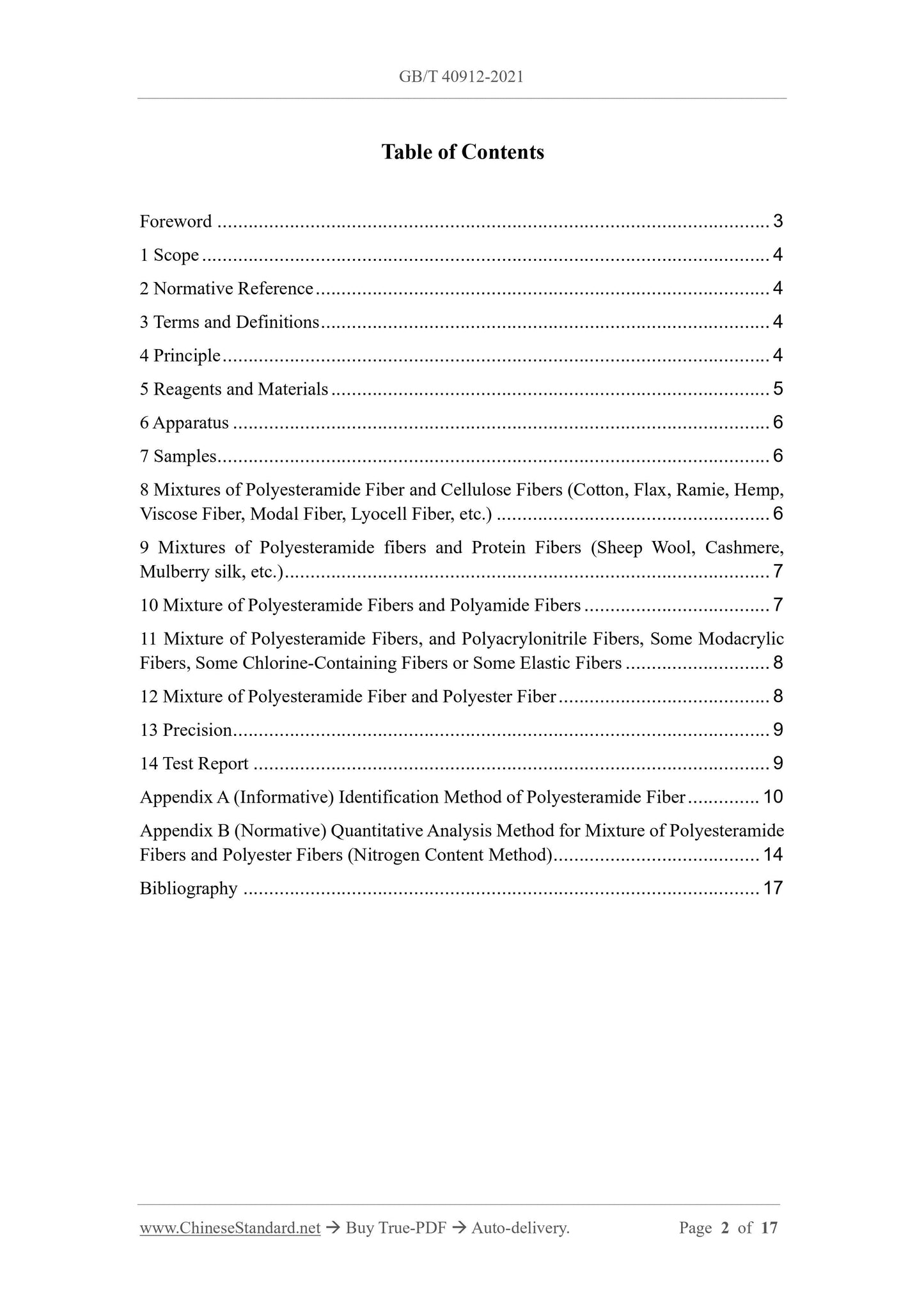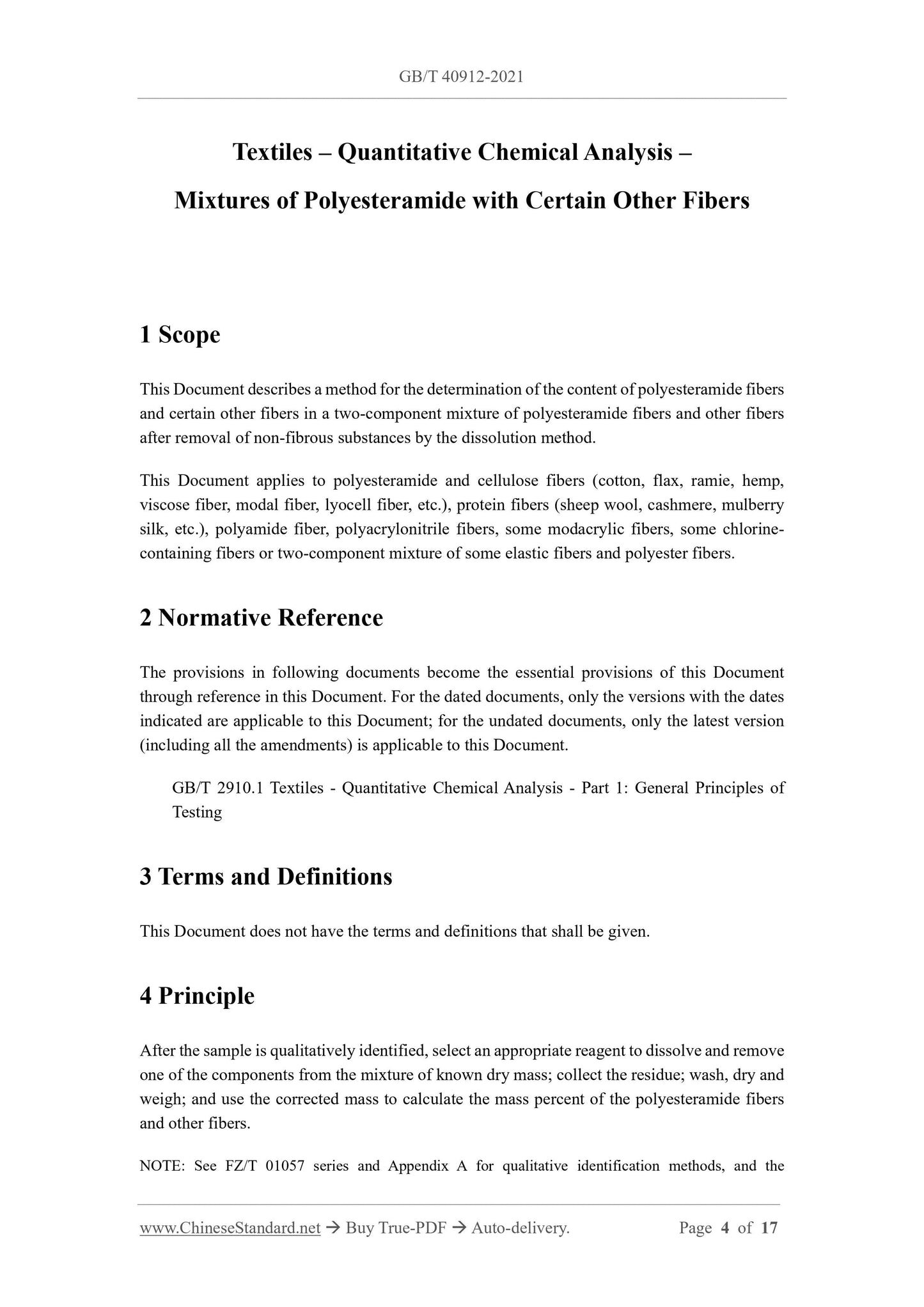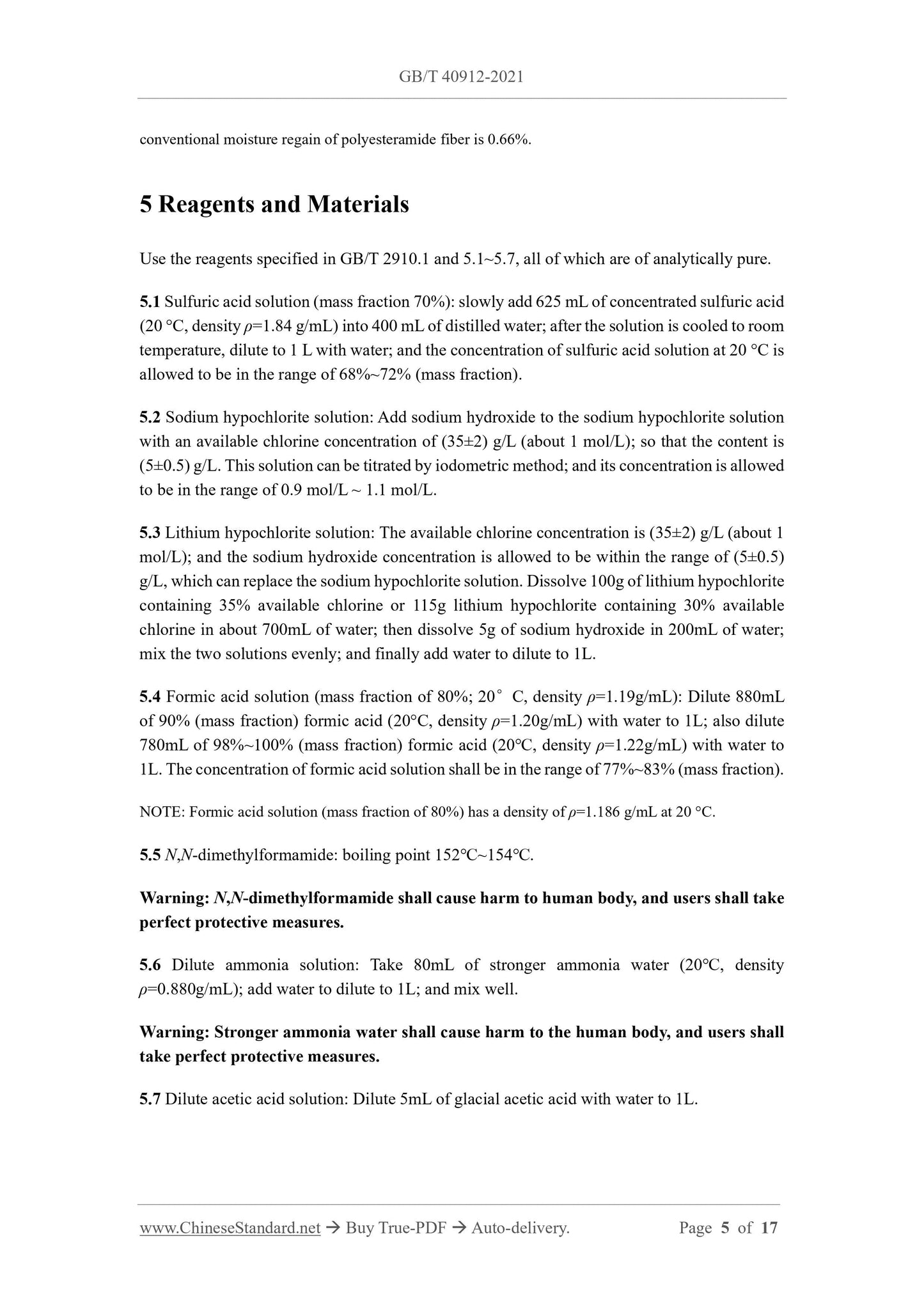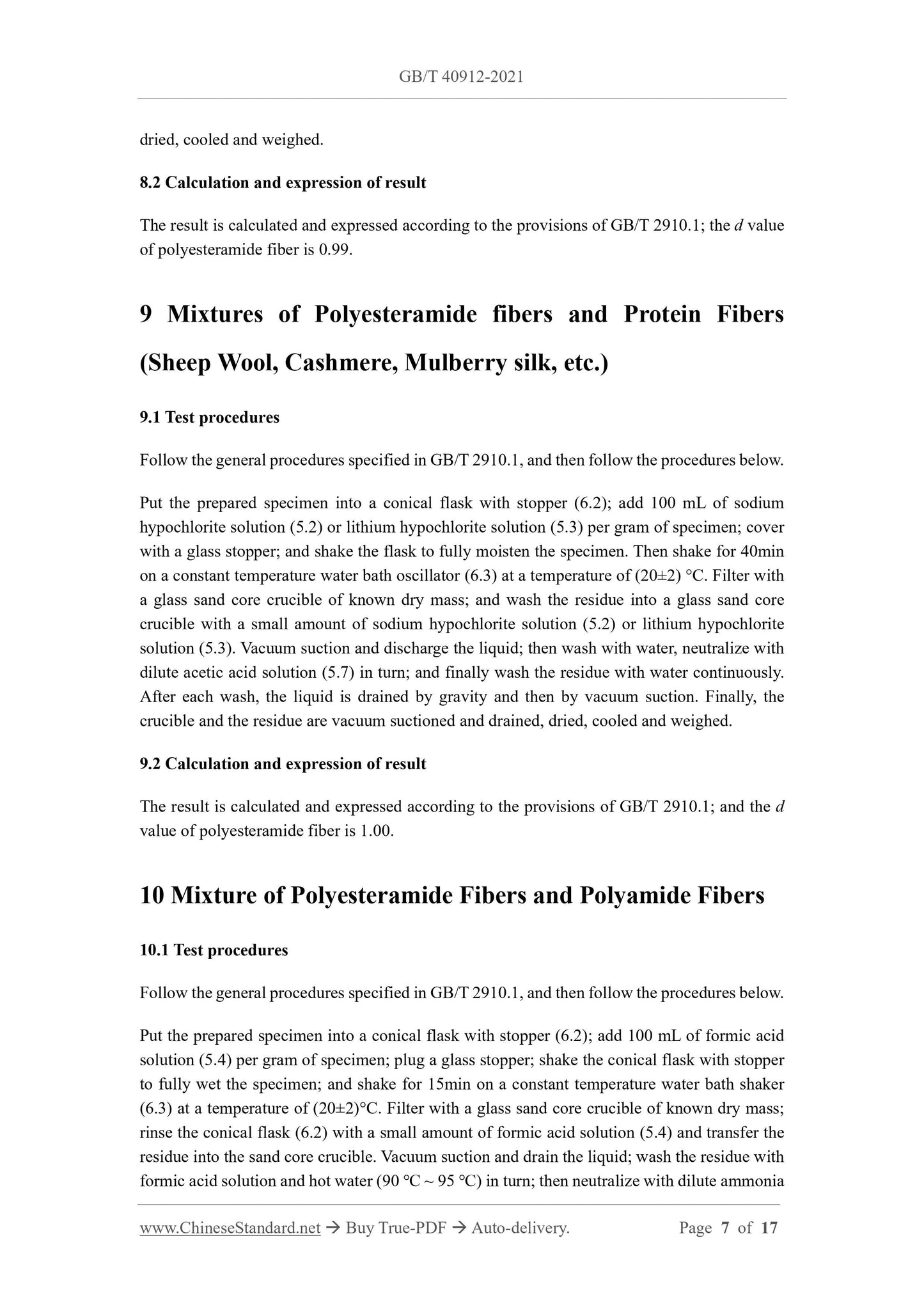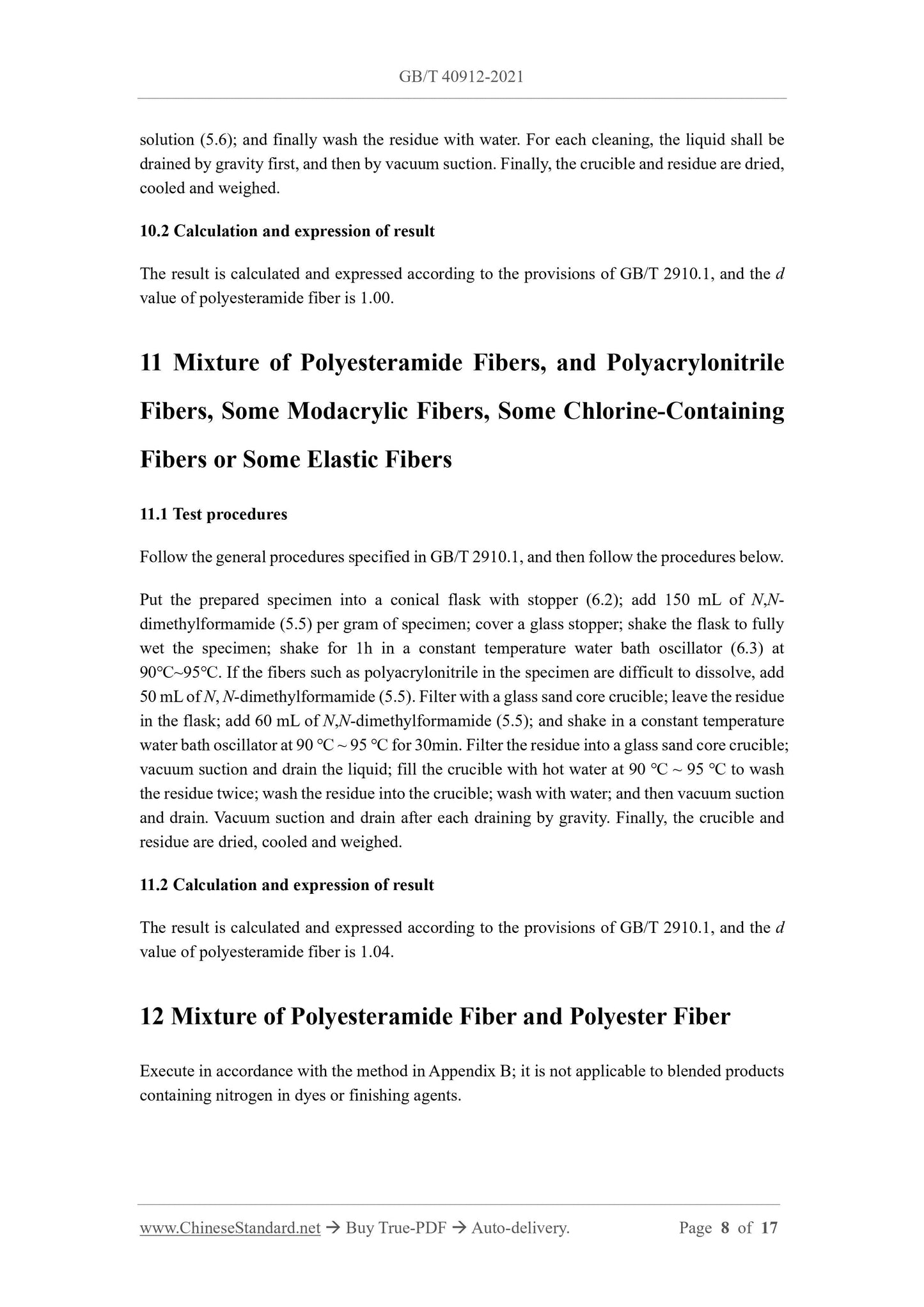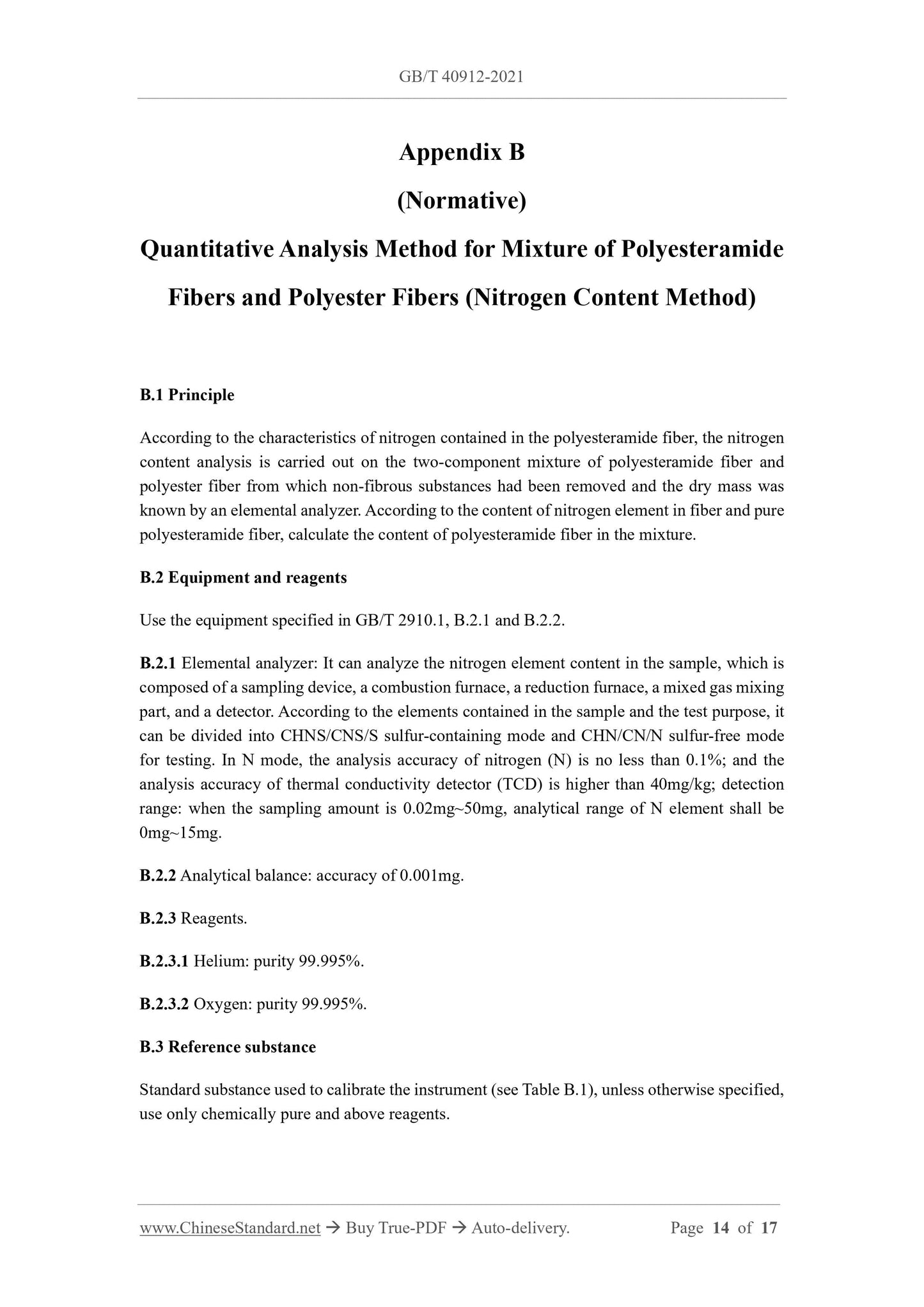1
/
of
7
www.ChineseStandard.us -- Field Test Asia Pte. Ltd.
GB/T 40912-2021 English PDF (GB/T40912-2021)
GB/T 40912-2021 English PDF (GB/T40912-2021)
Regular price
$245.00
Regular price
Sale price
$245.00
Unit price
/
per
Shipping calculated at checkout.
Couldn't load pickup availability
GB/T 40912-2021: Textiles - Quantitative chemical analysis - Mixtures of polyesteramide with certain other fibers
Delivery: 9 seconds. Download (and Email) true-PDF + Invoice.Get Quotation: Click GB/T 40912-2021 (Self-service in 1-minute)
Newer / historical versions: GB/T 40912-2021
Preview True-PDF
Scope
This Document describes a method for the determination of the content of polyesteramide fibersand certain other fibers in a two-component mixture of polyesteramide fibers and other fibers
after removal of non-fibrous substances by the dissolution method.
This Document applies to polyesteramide and cellulose fibers (cotton, flax, ramie, hemp,
viscose fiber, modal fiber, lyocell fiber, etc.), protein fibers (sheep wool, cashmere, mulberry
silk, etc.), polyamide fiber, polyacrylonitrile fibers, some modacrylic fibers, some chlorine-
containing fibers or two-component mixture of some elastic fibers and polyester fibers.
Basic Data
| Standard ID | GB/T 40912-2021 (GB/T40912-2021) |
| Description (Translated English) | Textiles - Quantitative chemical analysis - Mixtures of polyesteramide with certain other fibers |
| Sector / Industry | National Standard (Recommended) |
| Classification of Chinese Standard | W04 |
| Word Count Estimation | 12,139 |
| Issuing agency(ies) | State Administration for Market Regulation, China National Standardization Administration |
Share
